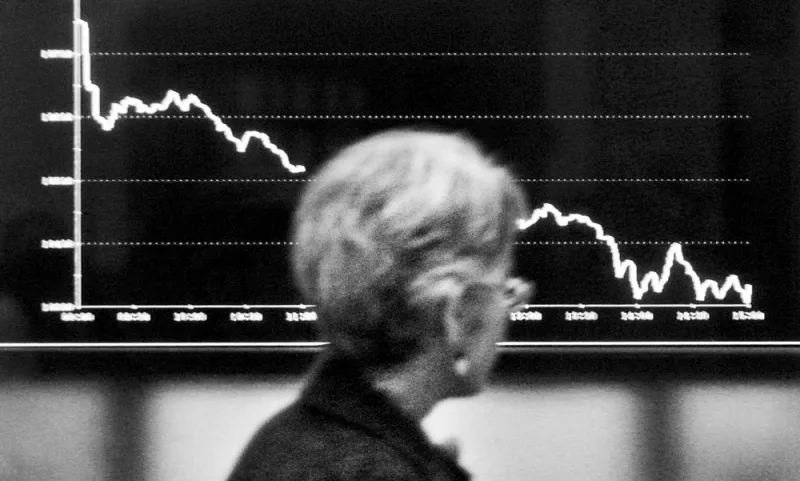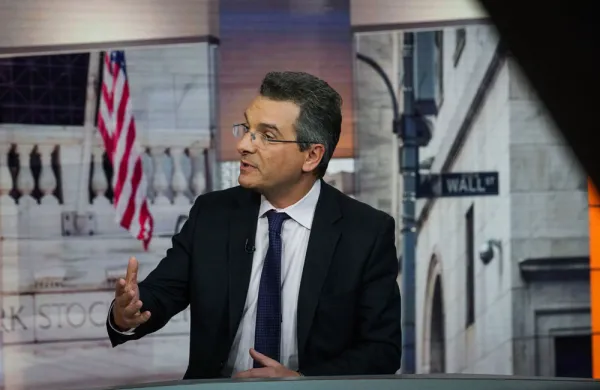Value stocks are underperforming in a way that they haven’t since the 2008 financial crisis and the early 2000s technology bubble.
QMA, a quantitative equity and multi-asset manager that is part of Prudential Financial’s investment management business, contends that current conditions are highly unusual — and said it expects performance to sharply reverse, with cheap stocks once again outperforming expensive ones.
Typically, high-quality stocks that are priced well relative to their value and which have improving growth expectations tend to outperform the broader market. Recently, however, stocks with weaker characteristics — and which are also expensive — have delivered far better returns.
“It looks like we’re going through a bubble every bit as big as the tech bubble was, every bit as big as in the global financial crisis, but it’s happening much more under the radar,” said Andrew Dyson, chairman and CEO of QMA. “The two other occasions when we’ve had this degree of underperformance, they’ve been followed by a very large correction,” he added.
According to QMA, “such extreme levels should not be alarming.”
“Rather, we view this as the backdrop for incredible investment opportunities,” the firm said in a report on the subject reviewed by Institutional Investor. “The current market environment is poised to generate some of the best returns in a quarter century.”
QMA argued that the current gap between the underperformance of cheap stocks and the outperformance of expensive stocks doesn’t make sense. “Following the Tech Bubble and GFC, corrections were in excess of 30 percent for value factors!” wrote the report’s authors, which included Dyson.
Industry observers have argued that the long period of underperformance in value stocks could be evidence that the markets have fundamentally changed and factors like value are no longer working. But the value factor is hardly broken, according to QMA.
QMA countered arguments that value stocks were a “trap,” meaning these stocks deserve to be cheap. The quant manager found that earnings for cheap stocks have actually improved over the last 18 months even as prices went south. “Unless fundamentals ultimately don’t matter, which we don’t believe to be the case, the relative attractiveness of value stocks is reaching extreme levels,” the authors wrote in the report.
“This combination is unprecedented, and signals the opposite of a value trap environment,” they added.
QMA noted that earnings have held up better than in the past, but investors still aren’t rewarding these stocks for the behavior. “This provides support for our view that increased risk aversion, or overreaction to macro/earnings uncertainties, is driving value weakness,” the authors wrote. Speaking to II, Dyson said that $1000 invested in cheap, high quality stocks within the Russell 1000 Index would buy 36 percent more in earnings. “That’s how far the price and fundamentals have diverged,” he said.
In the report, QMA also looked at insider buying to see how firm management viewed the prospects of their companies. The authors found that the relative buying activity of management in value is at an all-time high.
“The relative conviction [of] insiders regarding cheaper stocks is higher than ever, which reinforces our conviction about the magnitude of the performance opportunity from here,” the report stated.
[II Deep Dive: Value Investing’s Heady Days Aren’t Coming Back, Study Says]
According to QMA’s research, March, May, and August of 2019 were some of the worst months of performance for value factors since 1996. In May, for instance, the value factor had its second worst performance out of 294 months. August was the seventh worst month for value and March was the tenth worst.
On a cumulative basis, the results are even more dramatic. According to QMA, between May 1998 and February 2000, value lost 16.5 percent. Between May 2007 and November 2008, value declined by 21.14 percent. Between January 2017 and August 2019, investors in value stocks experienced a 21.08 percent decline.
“This may be an unexpected result to investors,” the report stated. “Markets do not feel as frothy as the Tech Bubble, nor as overwhelmed with systemic concerns as in the GFC. However, the relative dislocations today are comparable with both episodes.”
All of this means that investors might be about to be rewarded for holding value stocks, according to QMA.
The PGIM quant manager believes the current environment is most similar to what happened during the love affair investors had with tech stocks in the late 1990s. “At the height of the Tech Bubble, the geometric return differential between the Russell 1000 Value Index and the Russell 1000 Growth Index was -17 percent in 1998 and -19 percent in 1999,” the report stated.
But patience paid off. Performance was turned on its head in the following three years. In 2000, the return differential between the Russell 1000 Value and the corresponding growth index was a 38 percent gain in 2000, a 19 percent climb in 2001, and a 17 percent increase in 2002.
“The most dangerous argument in investing is ‘this time is different,’ Dyson said. “It almost always costs you a fortune to believe that.”







